| | | | | | | | | | | Axios What's Next | | By Alex Fitzpatrick, Joann Muller and Jennifer A. Kingson · Aug 05, 2022 | | Alex's Star Trek obsession paid off this week, leading to today's story about a visual effects company helping filmmakers create even better-looking movies and TV shows. Today's Smart Brevity count: 1,056 words ... 4 minutes. | | | | | | 1 big thing: Next-gen movie magic | 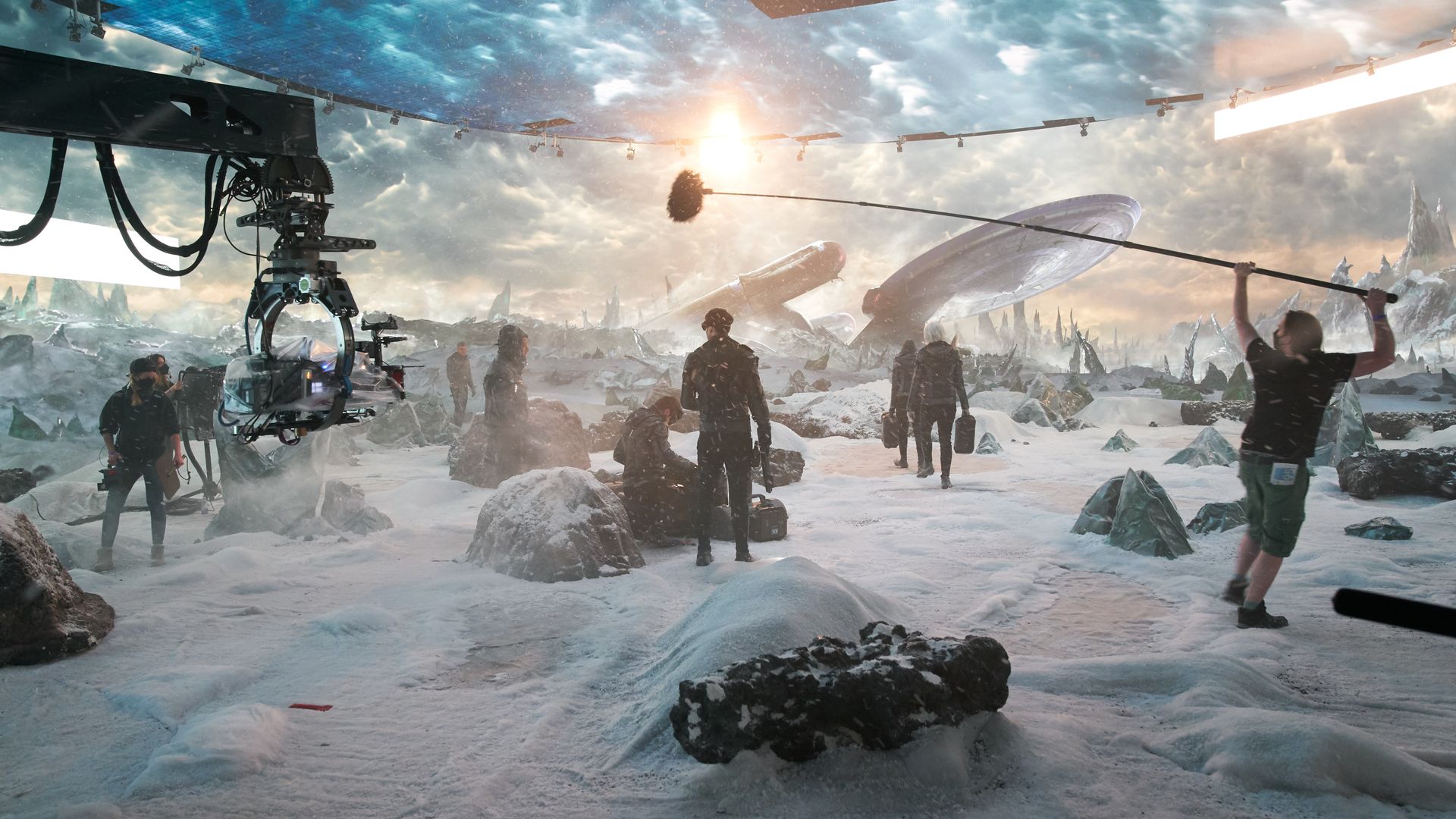 | | | Pixomondo's virtual production studio. Photo courtesy of Paramount+ | | | | The green screen of the future is essentially a massive computer monitor, powered by video game software that can generate almost any environment a filmmaker might want in a TV show or movie, Alex Fitzpatrick reports. - The tech, pioneered by visual effects (VFX) firms like Pixomondo, ARwall and Industrial Light & Magic, is called "virtual production."
Why it matters: Virtual production is helping filmmakers, actors and VFX pros create visually stunning shows and movies for the rest of us to enjoy. Details: Pixomondo, a leader in the space, has three virtual production studios — soundstages surrounded by massive LED panels, which use the Unreal video game engine to depict everything from mysterious alien worlds to cavernous spaceship interiors. - Actors and props are shot in front of the screens, as digitally generated content is rolling behind them.
- That gives actors a chance to see and react to what's happening on those screens — a huge leap forward from green screens, which are, well, just green, with content added in post-production.
Artists and designers build each virtual environment with input from a given show or movie's creative team — a back-and-forth process that "becomes kind of like jazz," says Pixomondo virtual production and VFX supervisor Nathaniel Larouche. - The tech is a natural fit for sci-fi and fantasy storytelling in particular — it's being used to shoot two "Star Trek" shows and Netflix's live-action "Avatar: The Last Airbender" series, for instance.
One of virtual production's biggest benefits, says Larouche, is that it moves a good chunk of visual effects work from the post-production process into the actual shoot. - That can make shows faster and easier to produce — and also enhance collaboration between directors, cinematographers, VFX pros and so on.
- And building a digital library of virtual environments can reduce long-term production costs.
For Glen Keenan, director of photography on "Star Trek: Strange New Worlds," the magic of virtual production lies in the lights. - With a green screen, he says, lighting — key to achieving a convincing visual look — is "complete guesswork." But Pixomondo's walls can themselves function as a highly adaptable and malleable lighting source, giving him and other filmmakers a powerful new creative technique.
- Still, Keenan sees virtual production as a supplement, not a substitute, for green screens. "I don't know if it's ever going to replace anything," he says. "I think it's a new tool."
Yes, but: Though building digital environments can be easier and cheaper than making big practical sets or filming on location, it still requires time and effort. What's next: Improvements in the underlying game engine and the components used to make these giant screens will open even more creative possibilities for virtual production tech. Share this story. |     | | | | | | 2. What we're driving: Kia's EV6 electric SUV | 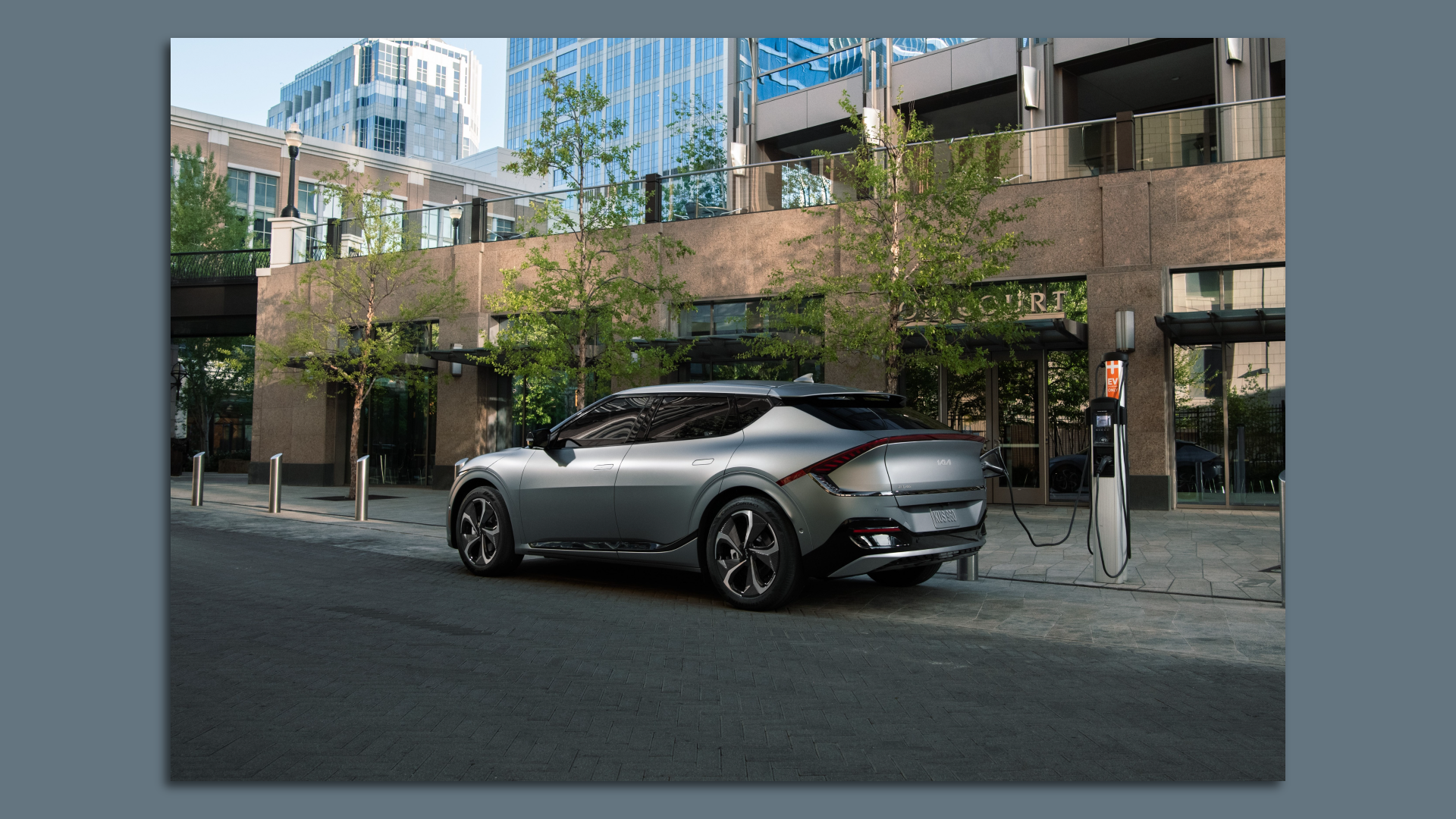 | | | Photo courtesy of Kia | | | | There's a lot to love about Kia's first electric vehicle, the EV6, Joann Muller writes: the SUV's daring design, roomy interior and the satisfying acceleration. - The $56,195 GT all-wheel-drive version she drove has a 274-mile driving range and recharges in about 20 minutes at a 350-kW fast charger.
- But, oh boy, the infotainment system is maddening.
Why it matters: Bigger, flashier touch screens are becoming the norm. But touch screens are difficult to operate — not to mention distracting. Details: To simplify the EV6's dashboard, both the climate and entertainment systems are controlled by a single narrow touch bar on the center stack between the driver and passenger. - Knobs on the left and right of the touch bar control either the volume and tuning, or the dual climate system — depending on which mode you're in.
Images courtesy of Kia - There's the rub: You have to toggle back and forth between entertainment and climate modes using nearly invisible arrows on the touch bar's black control panel.
- And that means taking your eyes off the road to squint down at the touch bar. You might think you're adjusting the fan, but wind up blasting the music.
The other side: Editors at WardsAuto named the EV6 to its 2022 10 Best Interiors and UX (user interface) list, citing its stylish and sporty interior "and highly innovative morphing controls that save space and reduce clutter." Joann's thought bubble: Buttons and knobs are actually good, especially in a moving car. |     | | | | | | 3. IVF, with a robot's help | 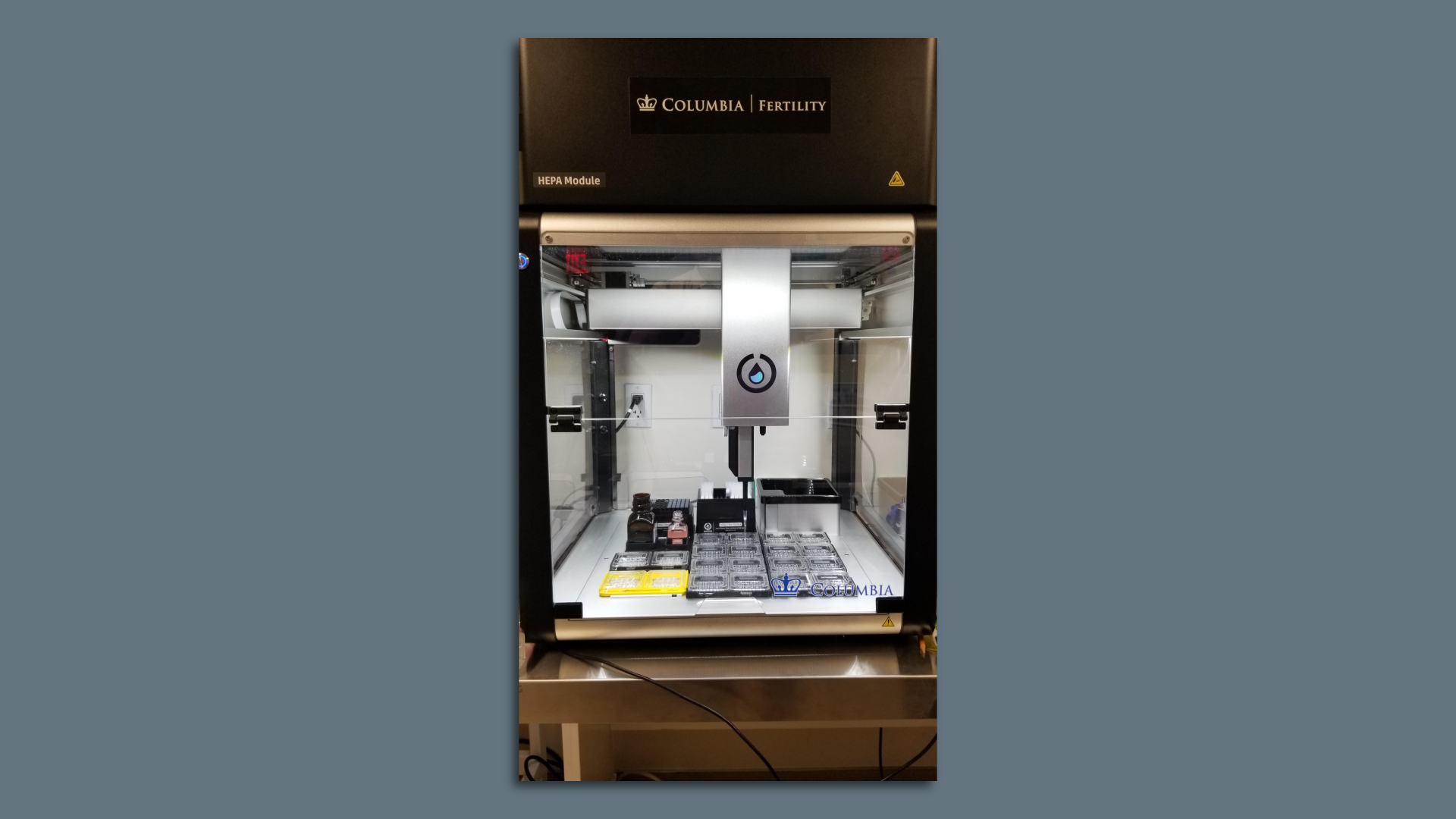 | | | Courtesy of Columbia University Fertility Center | | | | A first-of-its-kind robot is aiding in the in vitro fertilization (IVF) process at Columbia University Fertility Center, Alex reports. Why it matters: It's a great example of a robot performing simple repetitive tasks requiring lots of accuracy, freeing up humans to do more mentally complex work. Details: The IVF robot — built in-house at Columbia — "allows for incredibly precise and reproducible preparation of ... tiny little droplets where embryos grow," Columbia University Fertility Center's Dr. Zev Williams tells Axios. - The robot's consistency and precision, says Williams, "reduces variability and therefore improves quality."
What they're saying: "We have an incredibly solemn and important duty to try to give the best care and to eke out every extra percent advantage that we can get that embryo," says Williams. |     | | | | | | A message from Axios | | Axios Smart Brevity book | | | 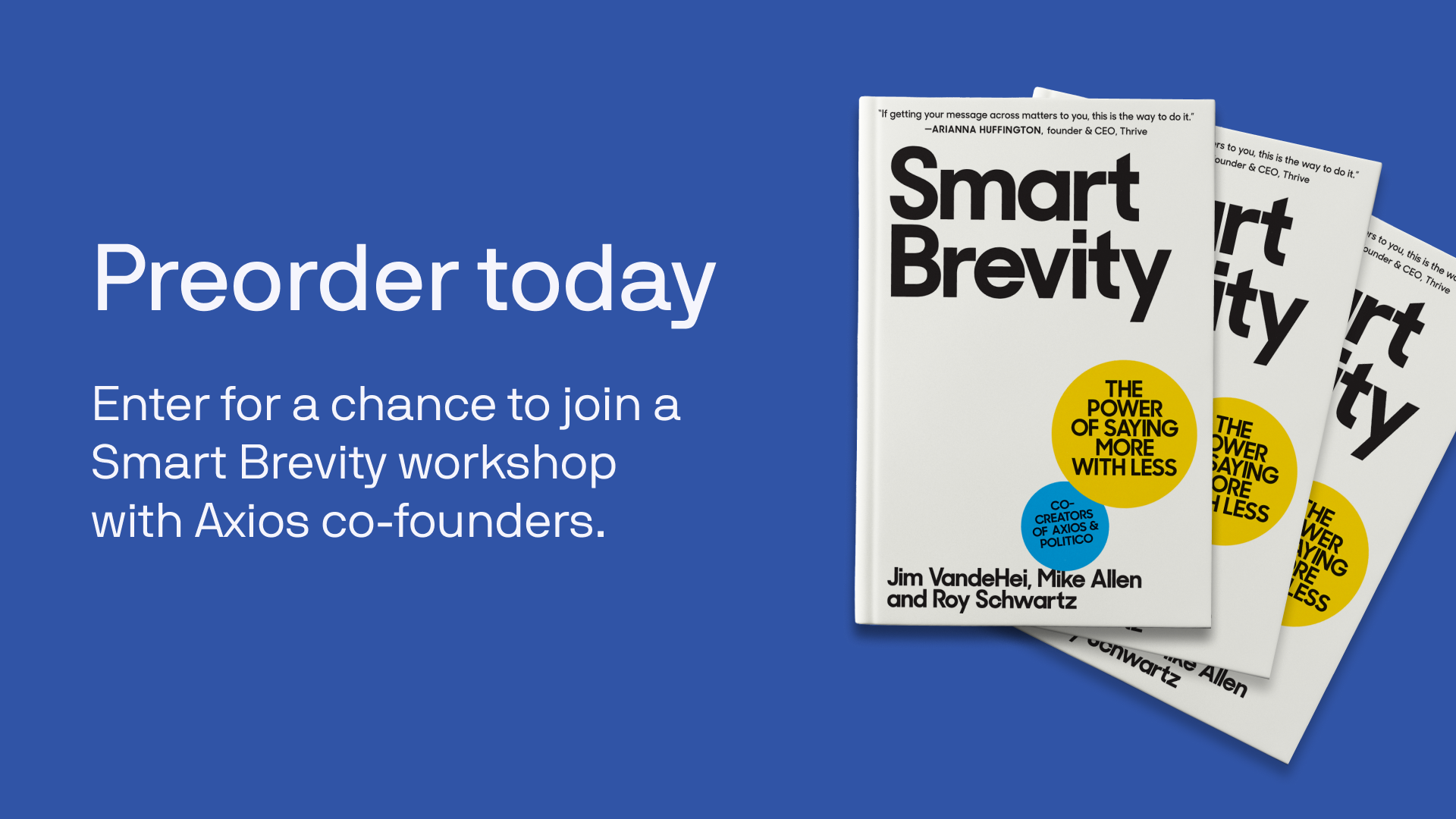 | | | | Axios' founders wrote a book to share their methods for punching through the noise to get people to pay attention to what matters most. Order the book and enter to participate in a Smart Brevity workshop with the authors. No purchase necessary. Preorder today at SmartBrevity.com. | | | | | | 4. WeWork's desks are filling up again | 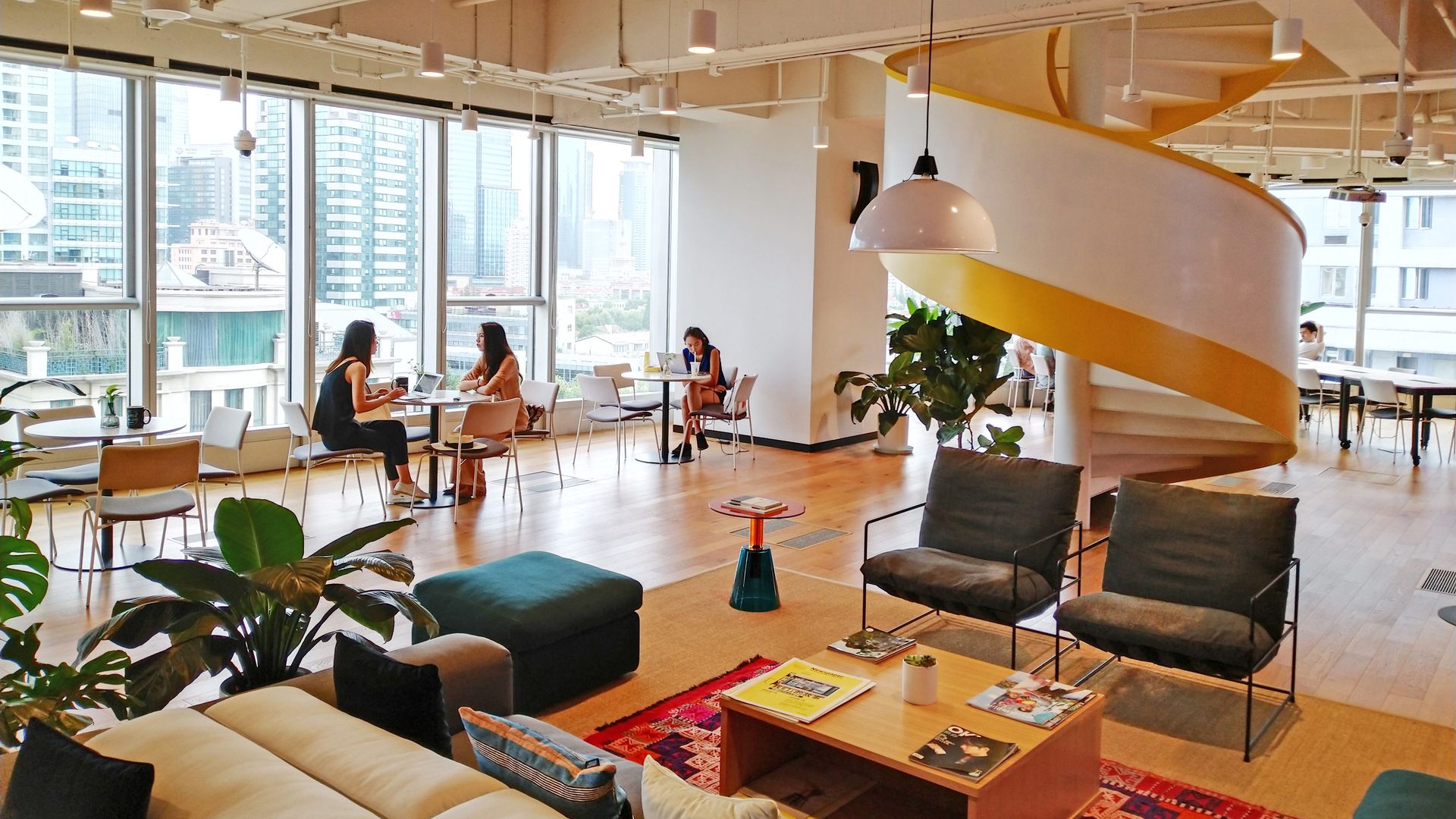 | | | A WeWork office in Shanghai, China. Photo: Costfoto/Future Publishing via Getty Images | | | | Co-working giant WeWork's offices-for-rent are back to their pre-pandemic occupancy levels, Bloomberg reports. Why it matters: It's another sign that more and more people are going back to working at an office, rather than from home. By the numbers: WeWork's offices were 72% full by the end of the most recent quarter — a dramatic increase from the 46% nadir in the depths of the pandemic. Alex's thought bubble: WeWork, which seemed doomed during the early pandemic days, might actually turn things around as companies seek hybrid-friendly office solutions. |     | | | | | | 5. What you're saying: Remote work and American decline | 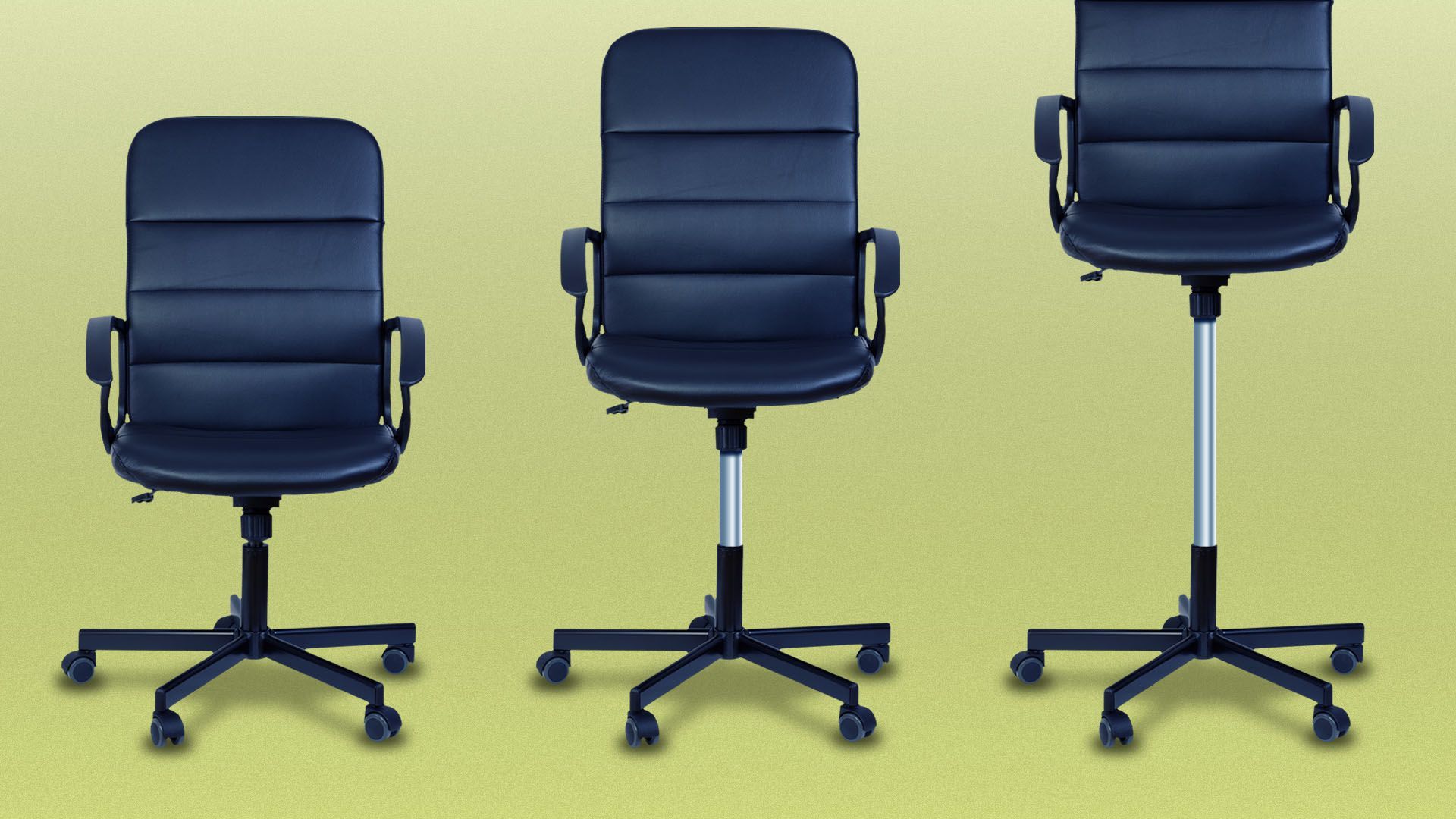 | | | Illustration: Sarah Grillo/Axios | | | | Speaking of remote work: What's Next readers had a lot of feelings about Peggy Noonan's column calling empty offices a metaphor for American decline. Here's some of what you said... - "The chance meeting in the hall was more likely to result in a conversation about football or the latest movie than some great breakthrough in creative thought," says Leslie Noland. "The most creative work I've seen over the years usually came from the most creative people, often working alone, often outside of the office."
- "Not only are remote workers more productive, they save money — on gas, auto wear and tear, time wasted sitting in traffic, flexibility, and in some cases, child care," writes Bill Green.
- And here's Gayle Lynn Falkenthal: "Marginalized or overworked people who've suffered due to the stressors of an office environment for years are finally thriving with some breathing room and flexibility."
|     | | | | | | A message from Axios | | Axios Smart Brevity book | | |  | | | | Axios' founders wrote a book to share their methods for punching through the noise to get people to pay attention to what matters most. Order the book and enter to participate in a Smart Brevity workshop with the authors. No purchase necessary. Preorder today at SmartBrevity.com. | | | | A hearty thanks to What's Next copy editor Amy Stern. Was this email forwarded to you? Get your daily dose of What's Next magic by signing up here for our free newsletter. |  | | Are you a fan of this email format? It's called Smart Brevity®. Over 300 orgs use it — in a tool called Axios HQ — to drive productivity with clearer workplace communications. | | | | | | Axios thanks our partners for supporting our newsletters. If you're interested in advertising, learn more here.
Sponsorship has no influence on editorial content. Axios, 3100 Clarendon Blvd, Arlington VA 22201 | | | You received this email because you signed up for newsletters from Axios.
Change your preferences or unsubscribe here. | | | Was this email forwarded to you?
Sign up now to get Axios in your inbox. | | | | Follow Axios on social media:    | | | | | |










No comments:
Post a Comment